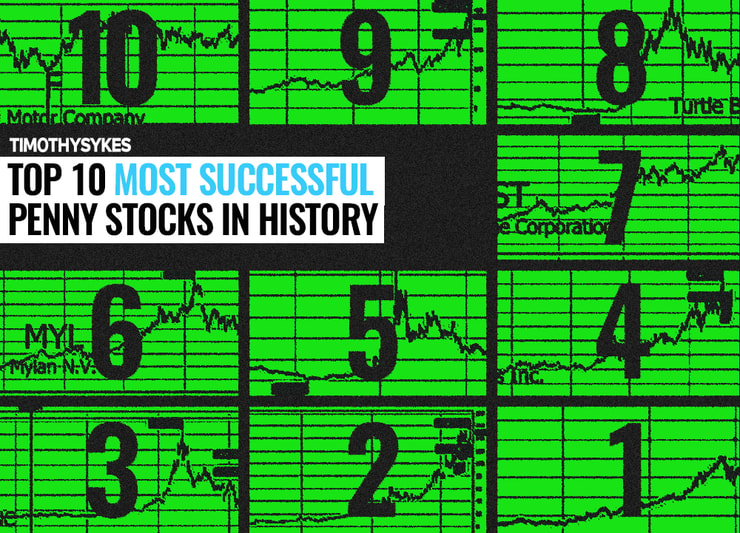Geopolitical tensions between Iran and Israel continue to reshape market sentiment, impact asset flows, and shift trading behavior in both countries’ stock exchanges. In volatile environments, smart traders don’t chase headlines — they analyze how fear, risk, and uncertainty affect price action and volume. Whether it’s oil prices or defense spending, conflict shifts the valuation of stocks, currencies, and entire sectors.
War is always tragic — this isn’t about politics or taking sides. As traders, we need to separate emotions from execution and focus on how conflict acts as a catalyst. In times like these, the fear and uncertainty swirling around the headlines drive some of the biggest momentum moves across stocks, currencies, and commodities.
Read this article on the Iran Israel stock market because it explains how geopolitical tensions, sanctions, and sector strengths directly shape market behavior and investment opportunities in both countries.
I’ll answer the following questions:
- How does conflict influence Iran’s and Israel’s markets differently?
- Which sectors dominate each country’s stock market?
- How can investors manage risk when trading in the Iran Israel stock market?
- What role do sanctions and external policies play in shaping these markets?
- Has the Tel Aviv Stock Exchange shown resilience during crises?
- What structural challenges limit growth in the Tehran Stock Exchange?
- How could reforms and global integration impact the Israel stock market?
- Can traders find opportunities in Middle Eastern exchanges despite instability?
Let’s get to the content!
Table of Contents
- 1 Israel Stock Market Focus and Performance (TASE: TA-35, TA-125)
- 2 Iran Stock Market Focus and Challenges (TSE)
- 3 Conflict and Stock Market Behavior Patterns
- 4 Future Outlook and Market Challenges Ahead
- 5 Key Takeaways
- 6 Frequently Asked Questions
- 6.1 What role does analysis play in understanding market movements after geopolitical events?
- 6.2 How do dividends and securities perform during Middle East tensions?
- 6.3 What should traders focus on in the aftermath of trading halts or shutdowns?
- 6.4 How do traders use sources, experts, and analysts to stay ahead of volatility?
- 6.5 What are the parallels between the Iran–Israel conflict and the war in Ukraine and Russia?
Israel Stock Market Focus and Performance (TASE: TA-35, TA-125)
The Israel stock market, anchored by the Tel Aviv Stock Exchange (TASE), has shown strength even during escalating conflict, confounding typical assumptions about wartime equity performance.
Despite facing a multifront war since late 2023, the TA-35 and TA-125 indices have continued upward, hitting record highs and outpacing global benchmarks like the S&P 500. That kind of performance doesn’t happen without a serious base of economic stability, deep investor confidence, and a long history of market resilience during instability.
American traders can get access to Israeli stocks through the following US-traded vehicles:
- Tel Aviv Stock Exchange Ltd (OTCPK: TVAVF) — Direct exposure to the exchange operator itself. If you believe trading activity and listings in Israel are going to rise, this stock benefits.
- BlueStar TA-125 Israel ETF (NYSE: TASE) — The closest U.S.-listed vehicle for getting exposure to the flagship Tel Aviv index. Tracks the TA-125 (similar to the TA-135 but more widely benchmarked), giving broad access to large and mid-cap Israeli companies.
- iShares MSCI Israel ETF (NYSE: EIS) — One of the most popular ETFs tied to Israel. Tracks the MSCI Israel Capped IMI, offering a diversified look at financials, healthcare, and tech across the economy.
- ARK Israel Innovative Technology ETF (BATS: IZRL) — Targets Israel’s innovation sector: biotech, genomics, IT, and industrial tech. More concentrated, so it moves harder when momentum kicks in.
- VanEck Israel ETF (NYSE: ISRA) — Tracks the BlueStar Israel Global Index. Includes Israeli companies whether they’re listed locally or traded abroad, so you get both domestic exposure and U.S.-listed giants.
- BlueStar Israel Technology ETF (NYSE: ITEQ) — Focused purely on Israeli tech. Think software, semiconductors, and IT companies powering Israel’s “Startup Nation” brand.
In teaching trading for over two decades, I stress that volatility is not a problem for traders — misunderstanding it is. Israeli equities continue to reflect a mindset where local traders, hardened by years of conflict, see drops as entry points rather than reasons to panic. Foreign capital inflows — including over $2.5 billion in the first seven months of 2025 — support this thesis, especially in sectors like finance and insurance. Traders must study both the headline risks and the underlying economic drivers before reacting.
Key Indices and Market Benchmarks
Israel’s main indices — the TA-35 and TA-125 — act as leading indicators for how the market is pricing in geopolitical risk, economic growth, and corporate performance. The TA-35 tracks Israel’s largest public companies, while the TA-125 broadens the view to include mid-cap stocks, offering traders a more comprehensive picture of domestic market health. Even as Israel faces cyberattacks, political instability, and military pressure, these indices have pushed higher, showing remarkable resilience.
Key to this resilience is how different the investor base in Israel is compared to other markets. Local institutions and retail traders have decades of experience navigating market shocks, from Lebanon to Hamas to Syria. This psychological edge shows up in how quickly stocks rebound after sell-offs. For example, after the June 2025 Iranian cyberattack, TASE still rallied. Momentum, liquidity, and seasoned market participants make Israel’s index behavior different — and often more stable — than the media narrative might suggest.
If you want to trade volatile stocks like the ones in Israel’s indexes, you need a platform with real-time data to see beyond the headlines and track actual price action.
When it comes to trading platforms, StocksToTrade is first on my list. It’s a powerful day and swing trading platform with real-time data, dynamic charting, and a top-tier news scanner. I helped to design it, which means it has all the trading indicators, news sources, and stock screening capabilities that traders like me look for in a platform.
Grab your 14-day StocksToTrade trial today — it’s only $7!
Role of Defense and Technology Sectors in Market Growth
The defense and technology sectors are key engines of growth in the Israeli stock market, especially during times of conflict. As fighting escalated in Gaza, Lebanon, and beyond, Israeli defense stocks attracted significant investor interest. Companies involved in cybersecurity, surveillance, missile systems, and military communications have benefited from both government contracts and foreign investment. When risk rises, demand for security and defense-related solutions increases — and the market reflects that.
Israel’s tech ecosystem is also thriving, with recent acquisitions like Google’s $32 billion purchase of Wiz and Palo Alto Networks’ $25 billion acquisition of CyberArk. These aren’t penny deals — they signal international confidence in Israeli innovation, even during war. I teach my students to follow the money and the tech sector in Israel has been one of the strongest magnets for capital. When geopolitical shocks occur, traders should watch for volume spikes in defense tech names — that’s where opportunity often begins.
More Breaking News
- Wheels Up Faces Market Shift After Extension of Investor Lock-Up Period
- JFB Stock’s Unpredictable Climb: What’s Next?
- Genmab Eyes Merus: Market Awaits Possible Acquisition
- Cidara Therapeutics’ Stock Surges Amid Key FDA and Analyst Updates
Currency Strength and Investor Confidence in Global Markets
The strength of the Israeli shekel, even amid war, is a signal of how much trust global investors have in Israel’s financial system. Over the last few months, the shekel has gained more than 9% against the US dollar, defying expectations. For traders, this matters — currency moves reflect both investor sentiment and capital flow trends. A strong shekel supports equity valuations, reduces import costs, and encourages further foreign portfolio investment.
When I train new traders, I stress that capital doesn’t lie — it moves toward confidence and away from fear. Israel’s economic fundamentals, including low unemployment, steady GDP growth, and ample domestic liquidity, have kept investor nerves in check. Meanwhile, safe-haven shifts during high-tension periods — including moves into gold and bonds — have been temporary, with money often cycling back into shekel-denominated assets. Traders watching forex, equities, and bonds must treat currency as a secondary signal of institutional conviction.
Iran Stock Market Focus and Challenges (TSE)
The Tehran Stock Exchange (TSE) is battling systemic weakness amid political instability, inflation, and renewed international conflict. In June 2025, the exchange saw a sharp sell-off, with over 99% of listed shares declining and the main index dropping by more than 2%. That followed a 12-day market shutdown caused by security concerns after attacks and a surge in regional conflict. Traders abandoned terminals, and confidence collapsed — that’s not a stable market, that’s an emergency exit.
What makes Iran’s stock market fundamentally different is its combination of capital controls, political interference, and lack of structural transparency. These factors increase uncertainty and limit the usefulness of technical setups or price action strategies. I always remind traders that you can’t apply the same rules to broken markets — you have to adapt or you’ll get blindsided. The TSE doesn’t just reflect Iran’s economy, it reflects its internal dysfunction, and for now, that dysfunction remains a dominant force.
Market Capitalization and Structural Characteristics
Iran’s stock market is large on paper, with thousands of listed companies and a market capitalization that rivals some mid-sized global exchanges. But size doesn’t equal strength. Many of these equities are illiquid, thinly traded, or artificially supported by government policy. The state owns or controls major shares in key industries like oil, steel, and banks, which limits true price discovery and skews valuation metrics. That’s not a real market — it’s a managed facade.
For traders, structural problems like these present huge risks. When even experienced local participants turn off their systems in protest — as they did in August 2025 — that’s not just about emotion. It’s about market failure. I teach my students to look for volume, volatility, and velocity — the three V’s of actionable price action. In Iran, all three can disappear overnight due to political command. That makes the TSE one of the riskiest markets to trade or analyze.
Role of Inflation Hedging in Investment Behavior
Iran’s high inflation environment has turned many investors into forced speculators. Equities in Iran are often used not for growth but as inflation hedges — ways to avoid the destructive erosion of real purchasing power. In this kind of setup, stocks don’t reflect business value, they reflect currency fears. That warps how traders should view market movement and makes any form of valuation-based strategy nearly useless.
Over the years, I’ve seen how inflation turns rational trading into survival trading. When you’re buying copper stocks not because you like the company but because you think the rial is collapsing, that changes your mindset. It also leads to wild price swings, short-term pumps, and volatility spikes that don’t follow any typical technical patterns. Iran’s inflation-driven behavior isn’t new — but its effects have gotten worse as sanctions and policy chaos have intensified.
Impact of Political Intervention on Market Stability
Political intervention has had a massive impact on Iran’s market stability, often pushing traders to the sidelines or out of the market altogether. In response to market crashes, officials frequently impose rules like trading halts, daily price fluctuation limits, or capital injections from state funds. But these measures don’t restore confidence — they confirm dysfunction. The June 2025 collapse showed this clearly, as hundreds of billions of tomans were injected into the market to stop the bleeding, with little effect.
I’ve said before: markets run on trust, not slogans. When governments try to control the market with artificial rules or narrative management, traders stop trusting the tape. That leads to unpredictable price action, lower volume, and a breakdown of normal risk/reward setups. In Iran, top-down manipulation has replaced real market forces. Until that changes, most attempts at trading the TSE carry more political risk than technical or fundamental edge.
Conflict and Stock Market Behavior Patterns
Geopolitical conflict and violation of rights influence Iran and Israel’s markets in dramatically different ways. In Iran, conflict usually leads to shutdowns, steep sell-offs, and forced policy reactions. In Israel, by contrast, stocks often rebound quickly after initial shocks, and in some cases, move higher during sustained military operations. The psychology, structure, and institutional response in each market are opposite in nature.
For traders, this difference is a critical insight. In Israel, a missile strike might lead to a one-day pullback followed by a tech rally. In Iran, a single political assassination can send the entire market offline for days. The underlying economic confidence, global integration, and investor behavior explain the divergence. I always tell traders: don’t just watch the news, track how markets react to the news — that’s where the edge is.
War-Related Shutdowns and Trading Disruptions in Iran
War-related shutdowns have become a recurring theme in Iran’s trading system. In June 2025, the Tehran Stock Exchange was closed for nearly two weeks following escalation with Israel and internal unrest. During that time, investor anxiety spiked, and when the market reopened, nearly every listed company saw losses. The shutdowns are framed as technical or security-based, but traders see them as political moves to suppress panic selling.
The impact is significant. Forced closures destroy short-term strategies, erode long-term confidence, and push traders to black market services or foreign exchanges. The key problem is transparency. When markets are paused without clear timelines or data, trust evaporates. In my experience, markets can absorb bad news — they just can’t absorb silence and manipulation. That’s why even the best setups in Iran get crushed by policy uncertainty.
Israel’s Market Resilience During Geopolitical Conflicts
Israel’s stock market has shown strong resilience during geopolitical conflicts, with some of the biggest rallies occurring during periods of intense military engagement. In the first half of 2025, the TA-35 index surged over 21%, even as fighting continued on multiple fronts. That’s not just a random bounce — it reflects underlying economic strength, a seasoned investor base, and clear institutional confidence in national security and corporate performance.
This type of market behavior fits what I teach: price is a reflection of perception, not just events. When traders believe a country can manage risk effectively — whether through military response or fiscal policy — they are more likely to buy than to sell during shocks. Israel’s companies, especially in fintech, security, and energy, have become magnets for foreign capital. Resilience is not just a headline — it’s a pattern.
Comparative Investor Sentiment Between Iran and Israel
Investor sentiment in Israel and Iran could not be more different. In Israel, domestic investors often view short-term sell-offs as buying opportunities, especially during heightened conflict. In Iran, panic and withdrawal are more common, with many investors exiting positions entirely when tensions rise. This difference stems from historical conditioning, economic trust, and the perceived ability of the government to manage risk.
I always teach traders to understand who else is in the market with them. Sentiment is not just about emotion — it’s about psychology shaped by experience. Israeli investors have been through years of volatility and have developed a rational response to war. Iranian investors, facing economic collapse, inflation, and capital restrictions, have not. That’s why the same event can cause a bounce in one market and a crash in another.
Future Outlook and Market Challenges Ahead
Over the next 1–3 years, both Israel and Iran’s stock markets face diverging paths shaped by global finance, domestic reforms, and geopolitical shifts. Traders and investors need to weigh both the potential upside and the structural risks tied to each market’s outlook.
Global Integration of the Tel Aviv Stock Exchange (TASE)
The Tel Aviv Stock Exchange is on track for deeper global integration. Recent reforms around regulatory alignment, cross-listings, and improved transparency are building momentum toward inclusion in more global indices. If TASE is added to broader MSCI or FTSE indexes, foreign investment will likely increase. Milestones include continued tech IPOs, strategic alliances, and increased international fund participation.
Israel’s market fundamentals remain attractive, with solid earnings growth, a strong shekel, and a focus on high-value sectors like AI, cybersecurity, and fintech. A return of diplomatic normalization efforts could further reduce the risk premium on Israeli assets. Traders should watch for signs of global fund inflows and FX strength as confirmation of this trend.
Structural Weaknesses in the Tehran Stock Exchange (TSE)
The Tehran Stock Exchange is unlikely to attract durable investor confidence without fixing core structural issues. Capital controls, unpredictable policy shifts, and a fragmented FX market continue to erode credibility. Governance deficits and opaque trading rules make it nearly impossible to apply standard valuation or technical trading strategies reliably.
To restore trust, Iran would need to lift capital restrictions, align with international accounting standards, and introduce real regulatory independence. So far, none of these changes appear on the horizon. Until then, the TSE remains a high-risk, low-transparency environment best approached with caution.
Role of Sanctions and External Policy Shifts
Sanctions and foreign policy changes will play a central role in repricing risk across both markets. If the US or EU tightens sanctions on Iran or disrupts oil exports through the Strait of Hormuz, traders can expect sharp sell-offs and rising energy prices. Conversely, any sanctions relief or diplomatic thaw could lift Iranian assets in the short term.
For Israel, the market is more sensitive to security partnerships and regional stability. A Saudi-Israel normalization deal or successful military campaign could push stocks higher. However, rising condemnation over Gaza and increased isolation — like Netanyahu’s recent “super-Sparta” speech — could also spook foreign capital. In either case, traders should be watching oil, the dollar, and emerging market ETFs for signs of shifting sentiment.
Key Takeaways
- Israel’s TASE continues to show strength and record highs even amid war, driven by tech and defense sector growth.
- Iran’s TSE is structurally weak, with inflation, capital controls, and policy failures leading to repeated sell-offs and shutdowns.
- Currency strength, global investment flows, and investor psychology explain why Israel’s market performs well while Iran’s collapses during conflict.
- Future trends hinge on reforms, sanctions, oil exports, and geopolitical shifts that could reprice risk across both markets.
This is a market tailor-made for traders who are prepared. Foreign stocks thrive on volatility, but it’s up to you to capitalize on it. Stick to your plan, manage your risk, and don’t let FOMO drive your decisions.
These opportunities are fast and unpredictable, but with the right strategy, you can make them work for you.
If you want to know what I’m looking for — check out my free webinar here!
Frequently Asked Questions
What role does analysis play in understanding market movements after geopolitical events?
Accurate analysis helps traders interpret short-term volatility and identify patterns in the aftermath of major events like war or sanctions. By combining market data with geopolitical context, traders can assess which sectors are overreacting or underpriced. Strong analysis is always rooted in reliable sources, not just reactionary news headlines.
How do dividends and securities perform during Middle East tensions?
In times of conflict, stable securities with consistent dividends can attract capital as traders seek lower-risk assets amid regional uncertainty. However, in the Middle East, dividend payouts can be disrupted by capital controls, budget shifts, or war-related costs. Traders must factor in payout risk, especially in economies with state-controlled sectors.
What should traders focus on in the aftermath of trading halts or shutdowns?
Following shutdowns like those on the Tehran Stock Exchange, traders should prioritize liquidity, volatility signals, and real-time reporting. Markets often lack transparency post-conflict, so relying on institutional insights and up-to-date information is key to avoiding false breakouts or manipulated recoveries. The aftermath is where reaction separates from preparation — don’t get caught chasing noise.
How do traders use sources, experts, and analysts to stay ahead of volatility?
Skilled traders cross-reference analysts’ outlooks, expert commentary, and real-time sources like Reuters to gauge market direction. This triangulation helps cut through the media noise and focus on what the money is actually doing. Trading isn’t about opinions — it’s about understanding how informed capital moves.
What are the parallels between the Iran–Israel conflict and the war in Ukraine and Russia?
Like in Ukraine, traders watching the Iran–Israel conflict must weigh global energy supply risk, military escalation, and world market contagion. Leadership decisions in both cases shape asset behavior far beyond regional borders. The risk of blockade, sanctions, or retaliatory moves can affect equities, commodities, and currencies worldwide.











Leave a reply